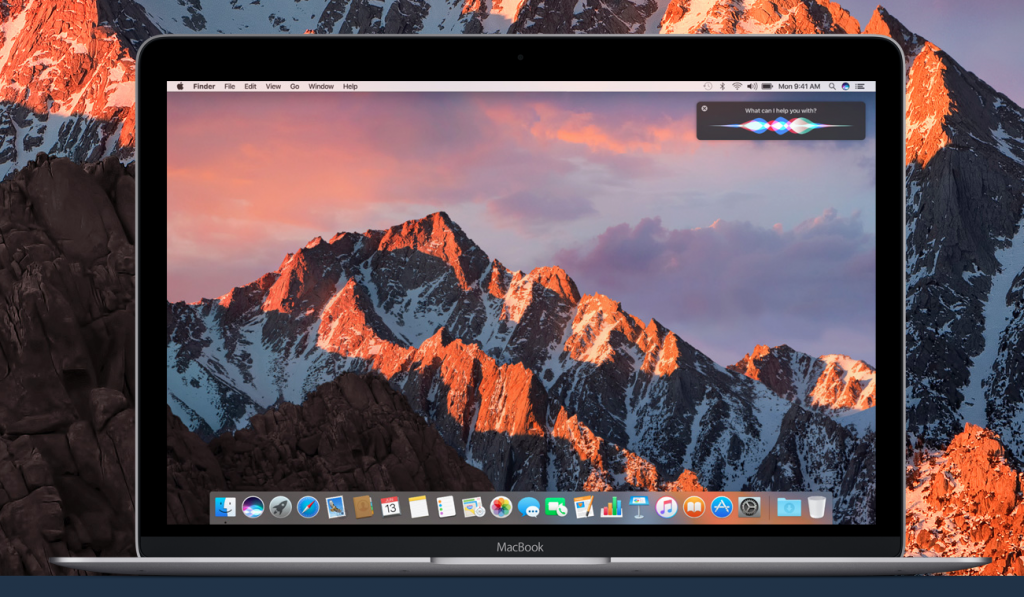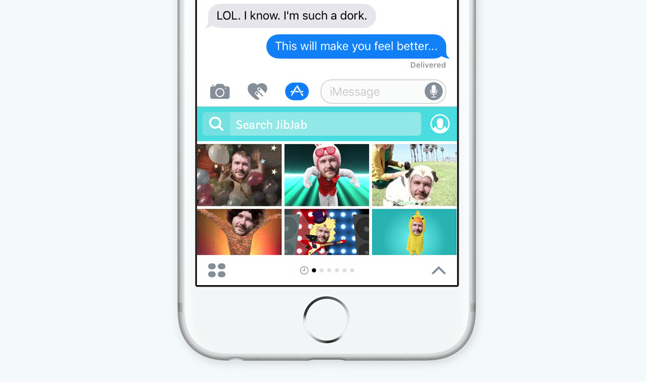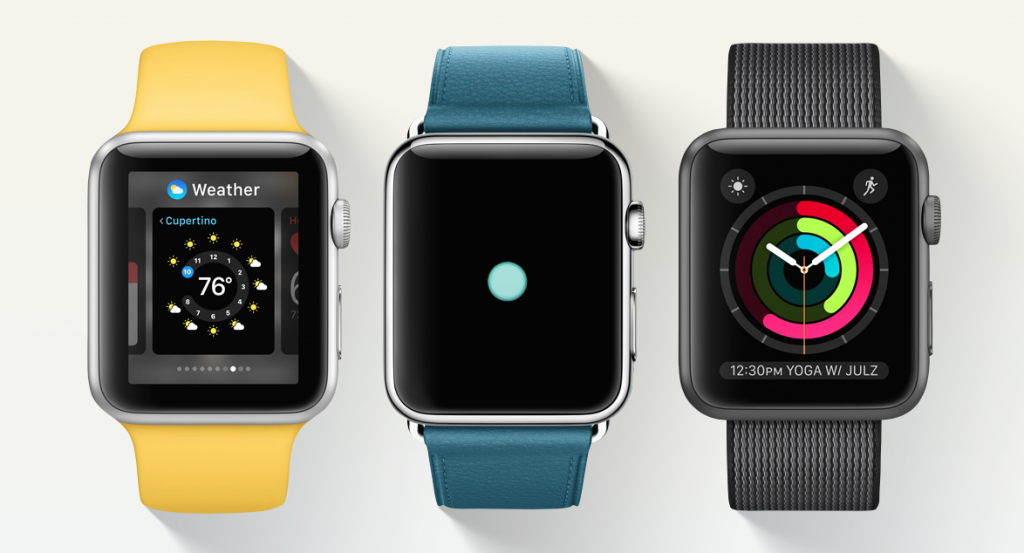Apple’s World Wide Developer Conference – where the company introduces the world to its latest software and product developments – is one of the most hotly anticipated events on the tech world’s calendar each year, and this year’s event held on June 13 didn’t disappoint.
The news coming out of the 2016 WWDC keynote speech is big: all of Apple’s operating systems are getting major upgrades that are set to overhaul the way that Apple devices interact with each other. More compatibility and better integration between devices were the major themes at this year’s conference, with Apple aiming to take on its competitors’ online services and software offerings.
If you had your fingers crossed for new hardware announcements, you might have walked away disappointed. But don’t worry – there’s still plenty to dig in to, and a lot to look forward to in app development. Here are the highlights:
OS X is getting a re-brand – and an upgrade

One of the big announcements in the WWDC keynote was that the Mac operating system is being re-named. Gone are the days of OS X – the operating system will now be known as macOS, and the new name is ushering in a few key changes.
The latest iteration of the Mac operating system, macOS Sierra, will focus squarely on improving integration with other Apple devices. Sierra will introduce users to a host of new features that will allow them to move between devices easily, including:
- A ‘Universal Clipboard’ that allows users to copy and paste across devices (think of it as Apple’s take on Evernote)
- An Apple Watch function that unlocks a user’s computer from their watch
- A new iCloud function that lets users save their computer’s desktop to the cloud and access it from another computer
And for those of you who love Siri, there’s exciting news: macOS Sierra will introduce Siri to desktop for the first time (more on Siri below).
Big changes are in store for iOS
In his presentation, Apple’s Senior VP of Software Engineering Craig Federighi billed the iOS 10 updates as the “biggest iOS release ever for our users”, and he’s not exaggerating.
One of the biggest updates is to the Messages app. New features like animations, custom emojis, an invisible ink feature, and handwritten notes are seen by analysts as an attempt to compete with Facebook Messenger. The Messages app will also have the ability to install third-party apps, giving developers a new platform within iOS to develop for. Some of the examples given by Apple of features this will enable are sharing content and sending money.
 Here are some of the other major upgrades coming to iOS:
Here are some of the other major upgrades coming to iOS:
- The Maps app is being redesigned to make navigation easier
- Apple News is being redesigned
- The Photos app will get an upgrade to compete with Google Photos on features like automatic organization
- A new voicemail transcription feature is being introduced
And arguably most importantly, huge changes are also in store for Siri, as the voice assistant
will be opening up to developers for the first time. Apple unveiled SiriKit for iOS 10, which lets developers design their apps with Siri compatibility in mind.
Until now, Siri has only been able to interact with default iOS services (e.g. Make a phone call using the default Phone app, create a reminder in the default Reminders app, schedule an event in the Calendar app, etc.). Now, app developers will be able to integrate Siri into their own apps, so users will be able to use voice commands for requests to third-party apps. Siri will now be able to do things like call a car on Uber, or send money through a payment app.
This clearly presents a great opportunity for app owners and developers to take their service to the next level and integrate Apple’s voice commands to improve their user experience.
The Apple Watch is speeding up

The Apple Watch operating system is also getting a shiny new update (are you sensing a theme here?). watchOS 3 is set to make a slew of improvements to the functionality of the Apple Watch, most notably a huge boost in speed.
Most complaints about the Apple Watch to date have been about the overall slowness of third-party apps on the device, illustrated by this joke from noted Apple analyst John Gruber:
The speed issue discouraged app developers from continuing development on the platform, feeling that there was a limit to the device’s performance. At this year’s WWDC, Apple announced that speed improvements will be coming to all apps, and can lead to third-party apps loading
seven times faster than they currently do on watchOS 2. This should entice third-party app developers to give the platform another shot.
In other watch news, Apple put a heavy emphasis on the fitness and activity tracking features of the watch, and introduced some nice new features like an SOS system for emergencies, and a new keyboard feature called ‘scribble’ that lets users handwrite letters directly on the watch instead of typing. Developers will also be able to better leverage the device’s onboard sensors, like heart rate.
Improvements are coming to tvOS

The fourth and final of Apple’s operating systems isn’t being left out of the software updates. Apple announced a few improvements to the Apple TV operating system, tvOS, but they’re modest.
Some of the most interesting updates from a development perspective are improved live streaming capabilities, four game controller support and multiplayer game sessions, HomeKit support (which lets users control enabled home appliances via their Apple TV), and improved search functionality.
A single sign-on feature will let users log into all of their individual TV apps linked to their cable provider (like NBC, ABC, AMC, for example) with one login – enter your credentials once, and they’re applied system-wide, rather than on a per-app basis. Since Apple TV now has more than 6,000 apps, this feature is definitely a welcome addition.
Continuing the theme of connectivity, users will also be able to use their iPhone as a remote, and use Siri to search Apple TV.
Wrap Up
So what are the big takeaways from this year’s WWDC keynote?
First off, Apple put a big emphasis on software this year and didn’t unveil any new hardware. This might be because its
hardware sales are slowing, and because Apple is finally recognizing that it needs to
play catch up with its competitors’ software and online services – for instance, a lot of the software updates for iOS are introducing features that Google already has.
Secondly, the theme of all of the major software updates was connectivity between Apple devices and operating systems. If the individual software updates don’t seem like such a big deal on their own, it’s because Apple is focusing more on the big picture – namely making all of its devices work seamlessly together.
Recently, there’s been a
shift in how we think about the future of tech – we’re moving away from isolated devices and platforms, and towards more connectivity and integration across devices. At this year’s WWDC, Apple made it clear that it’s ready to take the plunge into that future. And if you’re an app owner, you should be thinking the same way.
